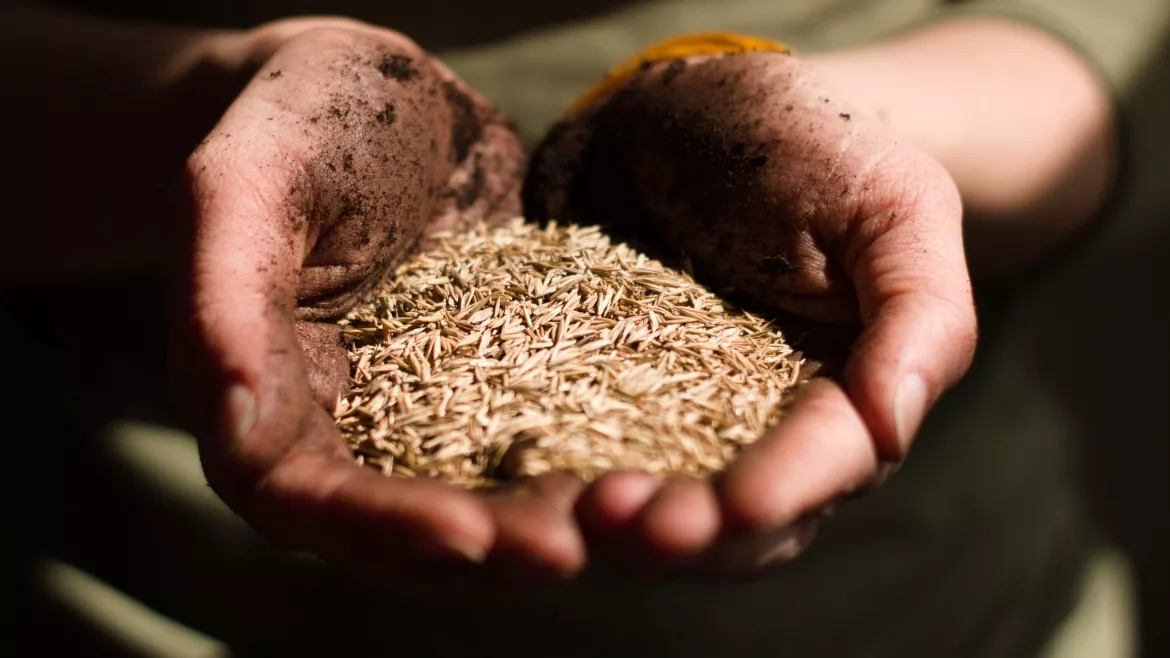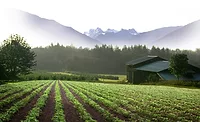Market Research
Increasing Organic Food Consumption to Propel Organic Seed Demand

Photo by Vince Veras on Unsplash
The unprecedented growth in pollution levels across the globe, triggered by urbanization and industrial growth, has led to the adulteration of foods ranging from fruits to vegetables to grains. Some studies link this pollution leaching into foods with an increase in ailments affecting humans, including diseases such as cancer. Based on the WHO facts and figures, cancer is among the leading causes of death globally, accounting for around one in six or 10 million deaths in 2020.
The alarming estimates associated with diseases caused due to unwanted intake of chemical effluent and food contaminants in the form of pesticides and fertilizers has prompted a growth in practices that rely less on chemicals. This, in turn, has boosted the adoption of organic farming practices, thus propelling an expected increase in organic seed demand in the coming years.
How Can Organic Farming Impact Overall Market Dynamics?
People all across the globe are transitioning toward organic foodstuffs, which has given rise to organic farming. Researchers and physicians have been emphasizing consuming food grains, vegetables, milk products and fruits free of toxic substances, further creating a favorable outlook for organic farming globally.
- As of 2020, 190 countries across the globe indulged in organic farming activities.
- The share of global organic agricultural land accounted for 74.9 million hectares, 1.6% of the total agricultural land.
- Between 2019 and 2020, organic agricultural land increased by 3 million hectares, recording a 4.1% growth.
-FiBL Survey 2022
The trend is further accentuated by organic farming projects undertaken by several government and non-government organizations (NGOs) and companies as part of their corporate social responsibility to support farmers across developing economies. With a similar intent, an Indian firm, Sudarshan Chemical Industries Limited, in collaboration with NGO Know How Foundation (INORA) during 2010-20, rolled out an organic farming project, SUDHA.
The project works with more than 150 farmers and 1,500 families across the village of Mulshi, Maharashtra and guides them in conducting farming through organic methods. This includes developing farmers’ skills for implementing sustainable agricultural practices, producing vermicompost and eliminating the use of chemicals and fertilizers that goes into farming. These supportive moves highlight the potential of organic farming across developing economies such as India, which will consequently drive the organic seed market.
Popularity of Organic Food Products to Stimulate Organic Seed Consumption
Organic food significantly strengthened its market foothold during the pandemic, especially across developed economies such as the U.S. This mainly happened because people gravitated toward healthier food choices due to an increased focus on boosting immune health as a precautionary measure. However, the demand remained intact among the flexitarian populace despite the shifting landscape.
According to the "Organic Industry Survey" by the Organic Trade Association (OTA)
- Organic sales exceeded $63 billion, registering a 2% (1.4 billion) growth YoY between 2020 and 2021.
- Food sales reached $57.5 billion, constituting over 90% of the total organic sales.
The ability of the organic industry to continue to progress despite facing unprecedented disruptions and uncertainty posed by the crisis is a testament to its strength. Besides, the ongoing efforts of market participants toward developing innovative solutions to mitigate supply chain weaknesses and prioritizing actions to engage and enlighten organic businesses and shoppers will open new growth avenues for the organic seed business.
Positive Environmental Benefits to Enhance Product Acceptance Rate
Too often, seed is overlooked as an essential element of our food and agricultural system. This minuscule resource has tremendous impacts on how we farm and what we consume. From flavor to appearance to nutritional content, it largely dictates the quality of our foodstuffs. Therefore, it bears the endless potential to transform our food system, especially when correlated with the principles of health, ecology and fairness that built the organic movement.
With a consistent surge in pest attacks and the noticeable rise in food consumption, safeguarding crops against pests holds the utmost significance. This calls for the use of pesticides with upgraded strength, which adversely affects human health and the environment. This is where organic seeds come into the picture.
The most instantaneous outcome of using organically grown seeds is the possibility to limit the amount of upstream pollution in the seed production procedure. Since there is an increased awareness of determining seed footprint and their negative byproducts even before planting, the organic seed industry is poised to attain remarkable growth through the ensuing years.
Favorable Regulatory Frame to Promise a Brighter Future for the Organic Seed Market
From a range of factors that are transforming the organic seed industry demographics, favorable regulatory norms across numerous economies are one of the leading aspects favoring this business space.
For instance, the European Regulation (EC) 834/2007 mandates that whenever external inputs are needed in organic seeds, these only need to be organic inputs. Similarly, Regulation EC 889/2008 in its implementing rules states that seeds obtained from the organic production method only should be used in organic agriculture.
Such regulatory regimes across different countries point toward an expansive scope for organic products, which consequently, will augment the organic seed market share in the coming years.
References:
https://www.ota.com/market-analysis/organic-industry-survey/organic-industry-survey
https://www.ers.usda.gov/topics/natural-resources-environment/organic-agriculture/
https://ahdb.org.uk/news/consumer-insight-the-organic-market-sees-a-dip-in-performance-in-2022
https://orgprints.org/id/eprint/38258/1/behr-2022-german-market.pdf
https://www.mdpi.com/2071-1050/12/20/8540
https://stateoforganicseed.org/why-organic-seed/
https://www.who.int/news-room/fact-sheets/detail/cancer
Looking for a reprint of this article?
From high-res PDFs to custom plaques, order your copy today!







